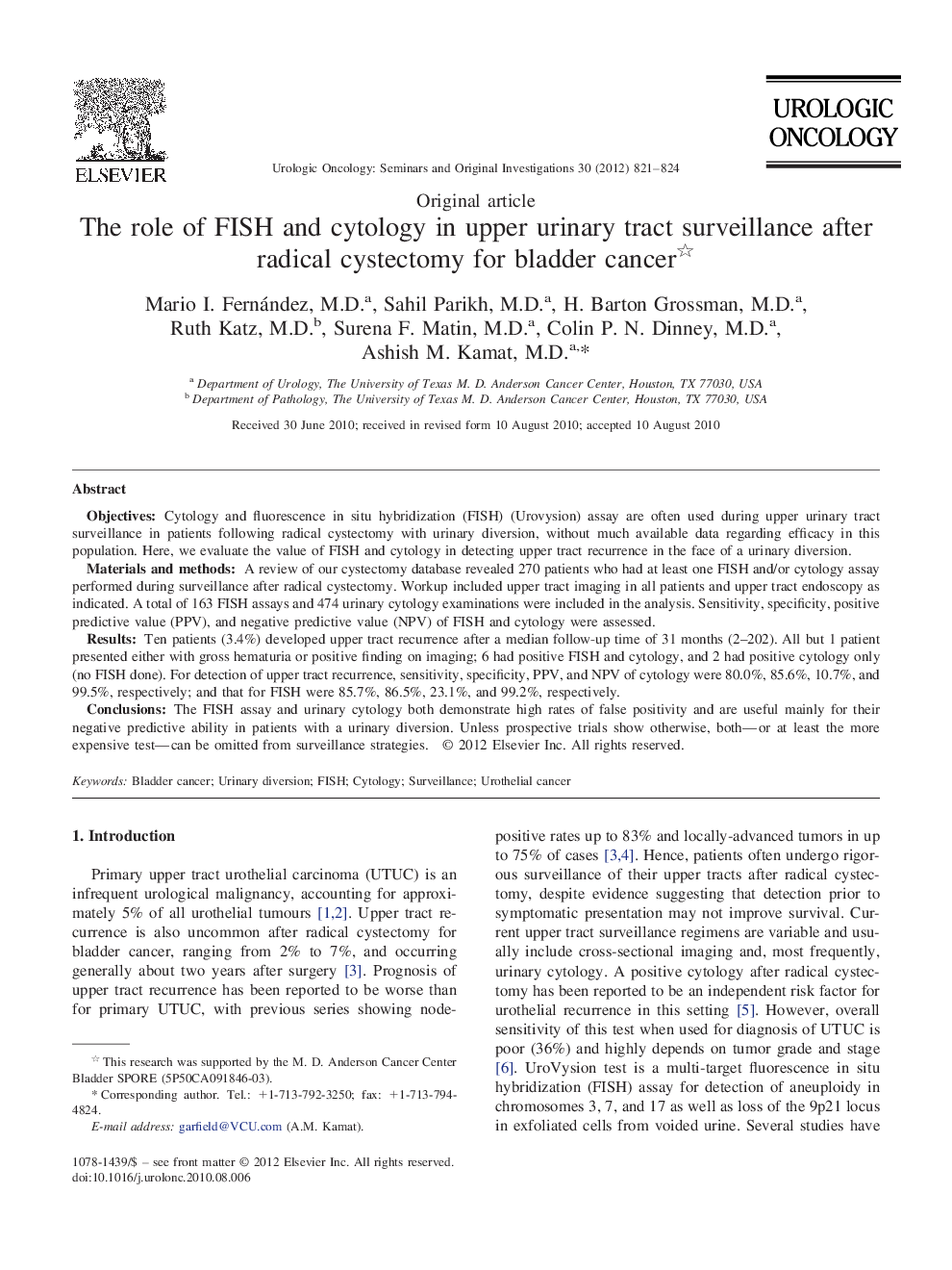| Article ID | Journal | Published Year | Pages | File Type |
|---|---|---|---|---|
| 3999847 | Urologic Oncology: Seminars and Original Investigations | 2012 | 4 Pages |
ObjectivesCytology and fluorescence in situ hybridization (FISH) (Urovysion) assay are often used during upper urinary tract surveillance in patients following radical cystectomy with urinary diversion, without much available data regarding efficacy in this population. Here, we evaluate the value of FISH and cytology in detecting upper tract recurrence in the face of a urinary diversion.Materials and methodsA review of our cystectomy database revealed 270 patients who had at least one FISH and/or cytology assay performed during surveillance after radical cystectomy. Workup included upper tract imaging in all patients and upper tract endoscopy as indicated. A total of 163 FISH assays and 474 urinary cytology examinations were included in the analysis. Sensitivity, specificity, positive predictive value (PPV), and negative predictive value (NPV) of FISH and cytology were assessed.ResultsTen patients (3.4%) developed upper tract recurrence after a median follow-up time of 31 months (2–202). All but 1 patient presented either with gross hematuria or positive finding on imaging; 6 had positive FISH and cytology, and 2 had positive cytology only (no FISH done). For detection of upper tract recurrence, sensitivity, specificity, PPV, and NPV of cytology were 80.0%, 85.6%, 10.7%, and 99.5%, respectively; and that for FISH were 85.7%, 86.5%, 23.1%, and 99.2%, respectively.ConclusionsThe FISH assay and urinary cytology both demonstrate high rates of false positivity and are useful mainly for their negative predictive ability in patients with a urinary diversion. Unless prospective trials show otherwise, both—or at least the more expensive test—can be omitted from surveillance strategies.
